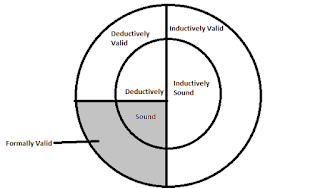
They are wonderful tools to explain
much of our world, but
lack 'The Right Stuff' to handle the metaphysical underpinnings of
anything near a Philosophy of Mind, Philosophy of Language , or a
Philosophy of Learning.
This is, because Category Theory specialises on roughly half of the
Noosphere. It does a wonderful job on exteriority, but cannot
sufficiently describe nor comprehensively access interiority.
Therefore, as is the case with Semiotics,
has limited metaphysical value with respect to philosophy in general.
For example: philosophies of mind, language, or learning are not possible using only category theoretical tools and/or semiotics.
Here is an example of one attempt which fails in this regard:
http://nickrossiter.org.uk/process/VisualizationFoundationsIEEE.pdf
and here:
Visualization Foundations IEEE
Here are two problems (of many) in the paper:
4.4.2 Knowledge is the Terminal Object of Visualisation states:
"The ultimate purpose of the visualisation
process is to gain Knowledge of the original System. When this succeeds
(when the diagram commutes) then the result is a ‘truth’ relationship
between the Knowledge and the System. When this process breaks down and
we fail to deduce correct conclusions then the diagram does not
commute."
I want to also comment on Figure 3 (which also
exposes missing or false premises in the paper), but I will wait until I
have discussed the assertions in the quote above which the authors of
this paper reference, accept, and wish to justify/confirm.
1) The purpose of a representation is NOT to gain knowledge; rather, to express knowledge. Also, truth has nothing to do with knowledge except when that value is imposed upon it for some purpose. Truth value is a value that knowledge may or not 'attend' (participate in).
1a) The 'truth value' of the System ('system' is a
false paradigm [later, perhaps] and a term that I also vehemently
disagree with) does not always enter into the 'dialogue' between any
knowledge that is represented and the observer interpreting that
knowledge.
2) The interpretation of a representation is not to "deduce correct conclusions"; rather, to understand the meaning
(semantics and epistemology) of what is represented. 'Correct'
understanding is not exclusive to understanding nor is it necessary or
sufficient for understanding a representation, because that
understanding finds expression in the observer.
2a) 'Correct', as used in this paragraph, is
coming from the outside (via the choice of which data [see Fig. 3] is
represented to the observer) and may have no correspondence (hence may
never ever commute) whatever to what that term means for the observer.
The authors are only talking about ontologies. That is a contrived and provincial look at the subject they are supposing to examine.
There may (and usually are) artefacts inherent in
any collection and collation of data. The observer is forced to make 'right' ('correct') conclusions from that data which those who collected
it have 'seeded' (tainted) with their own volition.
'System' (systematising) anything is Reductionism. This disqualifies the procedure at its outset.
They are proving essentially that manipulation leads to a 'correct' (their chosen version) representation of a ‘truth’ value.
I could tie my shoelaces into some kind of knot
and think it were a correct way to do so if the arrows indicate this.
This is why paying too much attention to a navigation system can have one finding
themselves at the bottom of a river!
The paper contains assumptions that are overlooked
and terms that are never adequately defined! How can you name variables
without defining their meaning? They then serve no purpose and must be
removed from domain of discourse.
Categorical structures are highly portable, but they can describe/express only
part of what is there. There are structure, dynamics, and resonance that ontology and functionalism completely turns a blind eye to.
The
qualities of Truth, Goodness, Beauty, Clarity,... (even Falsehood, Badness, Ugliness, Obscurity,...) can be defined and identified within a knowledge representation if the representation is not restricted to ontology alone.
In order to express these qualities in semiotics and category theory, they must first be ontologised funtionally (reduced). Trying to grasp them with tools restricted to semiotics and category theory is like grasping into thin air.
That is actually the point I'm trying to make. Category Theory, and even Semiotics, each have their utility, but they are no match for the challenge of a complete representation of knowledge.


























